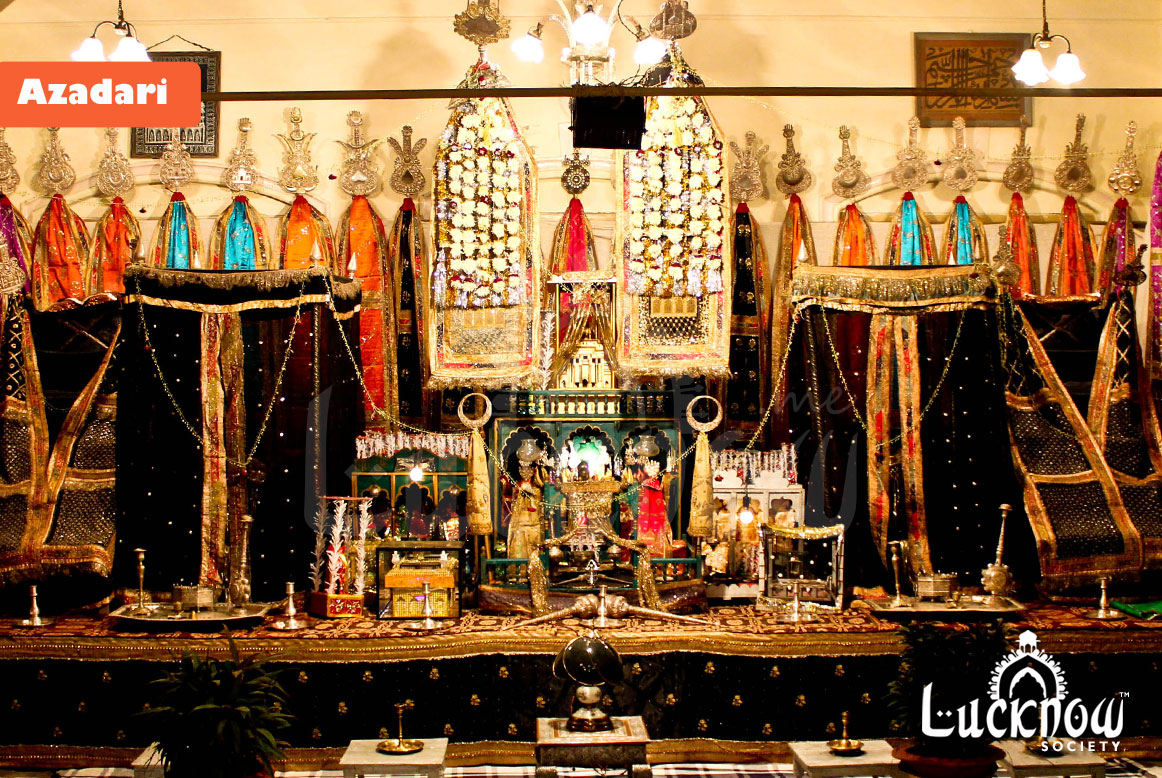“Gham-e Hussain Bulaega Khud Hi Logo Ko,
Hamara Kaam Hai Farsh-e Aza Bicha Dena”
Every year the start of first Islamic month of Moharrum marks a month of mourning for Hazrat Imam Hussain ( A.S.), the grandson of Prophet Muhammed ( Peace Be upon Him). He sacrificed himself and his family, friends including his 6 months old son. He refused to bow down before tyranny. His fight was for truth against injustice. Hazrat Imam Hussain (A.S.) will remain as a revolution against all tyrants and oppressors. He will continue as a symbol for dignity and freedom for all the mankind and not only the Shias Muslims. Complete month of Moharram is sacred and people of all faiths participates in large numbers in the processions taken out as part of Moharrum. The Azadari in Lucknow had a long history…In the 18th century, when Nawab Asif-ud Daulah was looking for a strategically viable spot to locate his capital and decamped from Faizabad and arrived in Lucknow, his new capital in 1775. The subsequent history of the Awadh dynasty of nawabs of Irani lineage, who gave Lucknow its indelible ‘Indo – Persian Azadari’ stamp.
The procession from the Bara Imambara was most magnificent, the metal crest of the banner of Hazrat Imam Hussain (A.S.), preceded by six to eight gorgeously caparisoned elephants and escorted by a military guard. Following them came a man bearing a black pole upon which two swords hung from a reversed bow. Then came the king and his Moulvis. Behind them was led a white Arab horse wearing a richly embroided saddle cloth and trappings of solid gold, with reddened flanks to imitate arrow wounds and finally many servants and followers. The present processions of Moharram like Juloos-e Mehndi of 7th Moharrum , Shahi Zari and Alam-e Ashura of 9th Moharrum have special significance. On 8th Moharrum, a massive and historic Alam is taken out from Dariya Wali Masjid. The sabeels are run between 1st to 10th Moharrum. Youths in Lucknow set up sabeel. The ritual of walking through fire (aag ka matam), singing marsiyas and nauhas has existed for centuries. It is one of the ways in which we can remember and mourn the martyrdom. Azakhana of Saltanat Manzil occupies a prominent place, whenever there is mention of Azakhanas of Lucknow. This Azakhana contains a main hall leading through a big rounded arch, containing the Shahnashin, a row of silver Alams with an exquisite Alam made of Kundan-work in the middle and Patkas embroidered with gold and silver Zari-work, silver Gulab-paash for sprinkling rose water during Majlis, silver incense-holder, silver candle stands and beautifully carved silver Mashaals, all reminiscent of the bygone nawabi era and which reflect its grandeur & beauty !
Credit : Contributor Member – Mohsina Mirza

